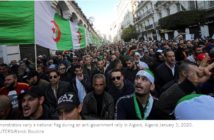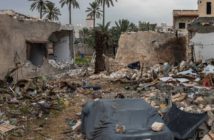Al Jazeera

Despite diverging views on the Arab revolutions, the GCC remained unified due to common security concerns.
It is difficult to talk about the position of the Arab Gulf states towards the Arab Spring, without first addressing the phenomenon of Arab uprisings.
Most researchers focused on economic conditions (misery) and political conditions (tyranny) as the two main forces behind the Arab uprisings. These conditions, however, have always existed. Why didn’t they have the same influence; giving birth to an Arab Spring before 2011, or even after that year? These two factors alone do not explain the emergence of the Arab Spring. A better approach would be to view the Arab uprisings as a phenomenon taking place within a context and carrying an internal logic. The response of each GCC state will be according to the degree of influence that these two elements have on the internal politics of that state.
Context of the Arab Spring
In order for a political crisis for a given regime to take place, according to Michel Dobry [Fr],there has to be a multi-sectorial mobilisation, in each sector or field independently of others, but all happening at the same time. In that moment, a regime is said to have a political crisis.
In GCC states, the division of fields is one important means of governance. And generally speaking, there exists what I call “tyarism”, derived from the Arabic word “tyar” which could be translated into current or stream, like a social current, a social stream. In each field there exists more than one tyar. Through these tyars, the regime tries to control the public space.
It is more than just a competition over resources, as conventional wisdom would have it. Rather, it is a way of running fields. If mobilisation is built upon political energy, then dispersing this energy becomes relevant. Tyarism is a means of dispersing political energy.
Tyarism’s main function consists of four points: 1- furthering isolation between fields as well as inside them; 2- ensuring hierarchical loyalty within each tyar; 3- putting rituals of legitimisation, or of de-legitimisation, at the regime’s disposal; and 4- enabling the regime to strike a pre-emptive mobilisation.
GCC response
The GCC countries regarded the Arab Spring as being a threat as well as an opportunity. However, they differ on the definition of threats and opportunities. This difference is influenced by the depth of changes that the Arab uprisings brought to them internally. Hence, their policies differ regarding the Arab Spring countries, like Egypt and Syria.
[For Qatar] Egypt didn’t constitute an ally against Iran, as it is the case with Saudi Arabia. Qatar, moreover, shares with Iran fields of energy, oil and gas.
Generally speaking, there are two main positions which are the clearest among Gulf states: that of Saudi Arabia, and to a lesser degree, that of Qatar. For example, while Saudi Arabia saw a threat in the fall of the Mubarak regime, Qatar saw in it an opportunity to expand its influence and ally itself with the Muslim Brotherhood.
The Saudi position, in principle, is against the Arab Spring. A hereditary monarchy cannot support the idea of revolution. On the contrary, the revolution here represents a threat, especially when considering the strong influence that the context of the Arab Spring has on its internal politics. And it will not be difficult to explain this position on the basis of religion, security and the concept of “fitna” (sedition) – chaos and upheaval.
But interests, sometimes necessitated that Saudi support the Arab Spring in other countries. This, however, raises the problem of justifying support in one place and the opposition in another. Therefore, Saudi Arabia needed a definition flexible enough that it could justify the opposition when it is needed, and the support where it is more appropriate.
Conflicting positions?
From that stems the following definition: “Revolution is a cause of ruin and destruction, but helping to lift injustice that has befallen our brothers and sisters in the Arab countries is our duty.” In the end, the Arab Spring becomes a fitna when it is not in the interest of KSA. But when it is serving Saudi interests, supporting the revolution is necessary in order to “lift injustices”.
The Arab Spring – as stated by a member of the Grand Oulemas, Sheikh Saleh al-Fawzan – is “evil”. It is “a cause of ruin and destruction”, as Saudi Prince Turki al-Faisal has declared. But arming the Free Syrian Army, to lift the injustice against the Syrian people, is a “duty”, as stated by Foreign Minister Prince Saud al-Faisal.
The choice between support and opposition is based on the following three points: 1- securing the country against catching the flames of Arab Spring; 2- protection of its allies; and 3- finally work against the interests of competing regimes.
Accordingly, Saudi Arabia – for example – did not support the revolution of January 25 in Egypt ( to secure the inside against the revolution on the one hand, and to protect the Mubarak regime, on the other hand ); but backed it in Syria (because the fall of the Assad regime means the fall of most of Iran’s cards, Saudi Arabia’s arch rival in the region). Saudi Arabia puts a lot of effort into marketing this definition, both internally and externally, under various names.
Qatar, however, less influenced by the changes, which the Arab Spring has brought, didn’t feel directly threatened by a revolution. Rather, the Arab Spring offered it a golden chance to reap the fruit of its relations with the Muslim Brotherhood. Therefore, it supported “democracy and stability” in the Arab Spring countries.
In general, the GCC didn’t take a unified stance in dealing with the Arab Spring due to the different interests and visions. These interests and views have been convergent for security reasons in certain situations, and divergent in other situations because of competition among the states.
While Saudi Arabia and the UAE supported the Mubarak regime, Qatar stood by the Muslim Brotherhood. It is clear that the Mubarak regime was a close ally of Saudi Arabia, especially in the intense competition with Iran for regional hegemony, a position shared by the UAE. In addition to its interest in balancing Iranian influence, the UAE did not regard the arrival of Muslim Brotherhood to power favourably.
But Qatar, in the midst of its quest to expand its influence in the region, did not see a threat in the fall of the Mubarak regime. On the contrary, that was seen as a positive change, creating opportunities for diplomatic expansion. Besides that, Egypt didn’t constitute an ally against Iran, as it is the case with Saudi Arabia. Qatar, moreover, shares with Iran fields of energy, oil and gas. This motivated both states to tread carefully with regards to their relations.
In addition, and despite the interest of the Gulf in a stable Yemen, for example, the way to deal with the Houthis or the various currents of opposition to Ali Abdullah Saleh was not the same for all GCC states. For example, Qatar is seeking to gain new cards, which makes it open to all parties ready to negotiate. Yet, the GCC remains largely unified by security matters, which encourages them to coordinate their positions towards many issues, especially the Arab Spring.
Mansour Almarzoqi Albogami is an academic and researcher on Saudi politics at Sciences Po de Lyon, France.






